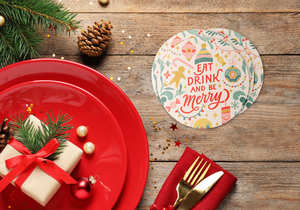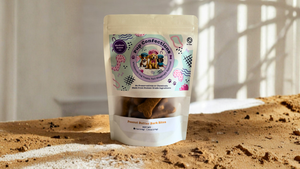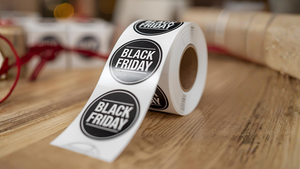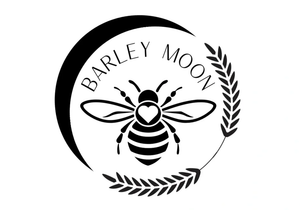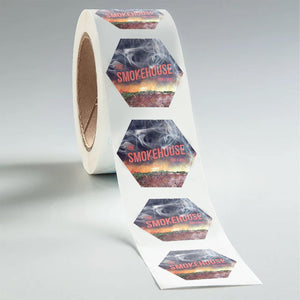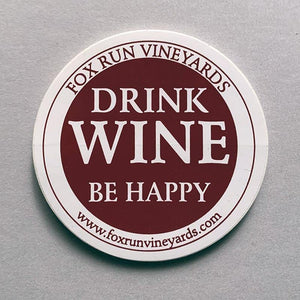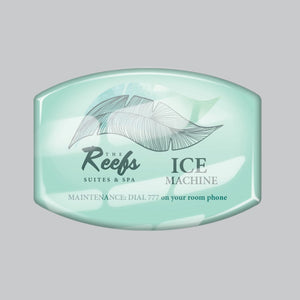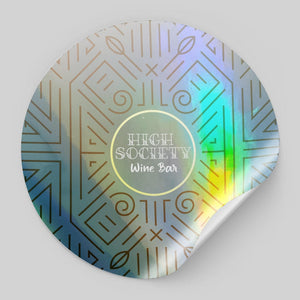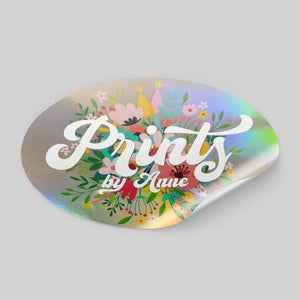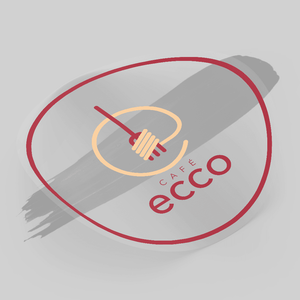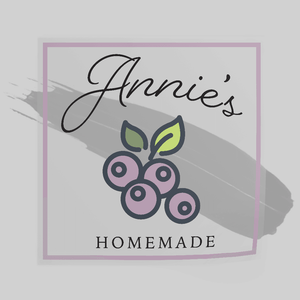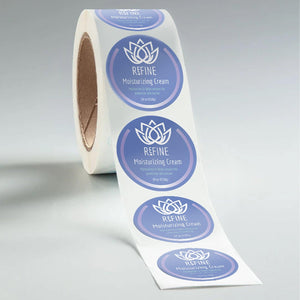Stickers vs. Labels: What’s the Difference?

Stickers and labels are both technically “stickers,” or things you can, you know, stick onto other things. But that doesn’t mean they’re identical to one another. Though many people use the words sticker and label interchangeably, doing so as a business that utilizes both can put you in a rather…sticky situation (sorry, we had to do it).
Businesses often utilize both stickers and labels for various product and marketing needs. And though the differences between the two may seem minor, understanding what sets them apart lets you choose what works best for you and your business.
What is a Sticker?
Most often made of vinyl or clear polyester, stickers, or decals, stand up to direct sunlight, water, and other stressors. They’re made to last, which makes them perfect for outdoor equipment warnings, but they’re also made for fun. The world of custom stickers is a wild and wonderful place. There’s a weekend sticker vibe where bright colors, cool designs, and funky shapes are fully embraced.

Businesses and organizations may use stickers as promotional materials or commemorative keepsakes and distribute them as freebies at events or on trade show floors to attract attendees to their booths. Other businesses may include a sticker with their name or logo on them in every shipment to encourage customers to promote their brand … some companies even sell their promotional stickers.
Stickers consistently slay the impulse purchase game and strategically placing them at your key points of sale encourages that, “Oh cool, stickers!” reaction from customers.
What is a Label?
If stickers have a weekend vibe, then one might view labels as the everyday hero. Labels identify products and provide information that plays a crucial role in product sales. Businesses use custom labels not only on retail products and product containers, but also on shipping boxes, envelopes, and invoices.

Label materials include either a durable film or a general-purpose paper. No matter which material one chooses, an important consideration for label design is clarity. Labels are meant to be read. As such, they need to have information neatly organized in easy-to-read fonts. This isn’t to say your labels can’t borrow a page out of the sticker book and provide a “Hey, that’s cool” factor, but balance the coolness with providing useful information. These two components must work together to sell products.
What’s the Difference Between a Sticker vs. a Label?
In terms of use, the difference between a sticker and a label is fairly easy to pin down:
- What’s the end use?
- Is it permanent or temporary?
- For inside or outside use?
Labels exist primarily to provide information that is generally for relatively short-term indoor use, while stickers are made to last outside or in harsher conditions for the long term, whether they’re providing instructions, delivering warnings, or providing promotional value.
When it comes to materials the two differ even further:
- Stickers: Stickers, or decals, are often thicker than labels and made of heavy-duty vinyl or clear polyester, which helps them stand up to water and sun exposure. Stickers can be reflective or metallic and even feature a domed surface. You can’t always predict where your stickers will end up, so you want a hardy material that keeps them from peeling and fading. This is a big part of what makes stickers such a great marketing tool: they spread awareness of your brand to anyone who sees them for years to come.
- Labels: Labels are thinner than stickers and made either of paper or of biaxially-oriented polypropylene (BOPP) film, which makes them waterproof. Products that will see their fair share of water exposure or even immersion need waterproof BOPP labels. Examples include any product you’d use in the bath, food, beer bottles, and even cosmetic jars also need to be tough against water, which can cause labels to swell and bubble and become unreadable. Paper materials work just fine on most consumer goods like spice jars, vitamins, restaurant labels, shipping labels, or care instructions. They can stand up to a sprinkle of water – but not a complete soaking.
How are Stickers and Labels Similar?
Think stickers have all the fun, and labels have to be boring, bland, and blah? Think again. Labels, especially on individual products or boxes on store shelves, play a crucial role in a customer’s buying decision.
- Does it catch the eye?
- Does it grab and hold attention?
- Does it provide all the necessary information someone needs before they decide to put it in their cart?
Labels have a lot of weight to pull, and designing a killer label is no quick or easy task.
And while promotional stickers should appeal to the sense of fun in the people who see them, they also need to do a bit of work in order to be a truly successful marketing asset. Stickers must promote your business or products in a way that vibes with your brand.

Stickers communicate the feel of who you are and what you do, the personality of your brand, and they entice interest. While they may seem like a fun and frivolous impulse grab or cool freebie to the people who get them, stickers actually turn any surface into a mini billboard.
The main thing stickers and labels have in common is you, your business, and the intent with which you need to approach the design of both. Great stickers and great labels are good business.
Customize Your Stickers and Labels with Stomp
Designing your own custom stickers and custom labels can be a lot of work. Cool stickers and killer labels don’t just appear out of thin air. It takes careful thought and creativity to bring them into being.
With Stomp you’ve got the tools you need to design and create stickers and labels that really bring the wow. We’ve got a wide variety of shapes and sizes, high-quality materials, and an easy-peasy design tool. Whether you need stickers, labels or both, having Stomp in your corner makes creating wow-worthy products a piece of cake.
- Nashira Edmiston


